The biggest challenge? HR's honest concern: "We don't know where to start."
Human Capital Management: Start with "Strategy," "Foundation," or "Analysis"
※This article is an edited version of one originally published on December 22, 2023, in "Japan Innovation Review."
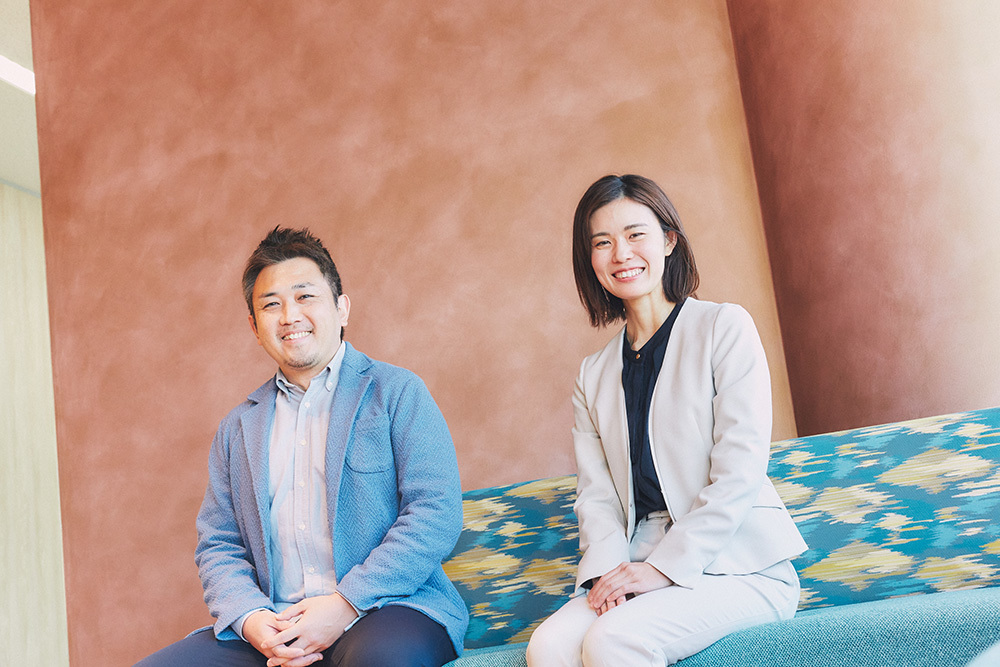
*Dentsu Inc. International Information Services (ISID) changed its company name to DENTSU SOKEN INC. on January 1, 2024.
Many readers might be surprised to learn that the Dentsu Group provides consulting services in the HR domain. In fact, Dentsu International Information Services (ISID), part of the Dentsu Group, has a proven track record of providing core HR systems to over 2,700 companies for more than 20 years. By leveraging the data obtained from these systems—covering HR, payroll, and workforce management—ISID can support strategic HR that bridges management and personnel functions, as well as the advancement of human capital management, a critical challenge for listed companies. Led by ISID, Dentsu Digital Inc. and Ignition Point Inc. have begun collaborating to offer total solutions in the HR domain. We spoke with two ISID representatives about the background, solution overview, and future service expansion.
(Interviewer: Tomokazu Segi, Editor-in-Chief, Japan Innovation Review)
Providing New Value Beyond Systems
──You've launched "HUMAnalytics" as the core HR solution within the Dentsu Group. Could you share the background and objectives behind its development?
Saito: Our ISID HCM Division originally provided the "POSITIVE" HR system, which accumulates core data like personnel, payroll, and attendance management. One catalyst was exploring what we could do with that data.
Additionally, within the Dentsu Group, we have Ignition Point Inc. and Dentsu Digital Inc., which excels in data analytics. We believed that by forming a strong partnership with them, we could provide new added value beyond just system provision. We began discussions among the three companies a year ago and have been advancing this collaboration.
On the corporate side, however, we often observed companies consulting separately with different entities: an information systems vendor for the HR system, a consulting firm for HR strategy, and an analytics specialist for HR data analysis. This fragmentation made it difficult to holistically address the diverse HR challenges companies faced.
Therefore, we believed that by seamlessly connecting "systems," "strategy," and "analysis" to provide integrated support, we could address the challenges faced by HR departments. This led to the development of HUMAnalytics.
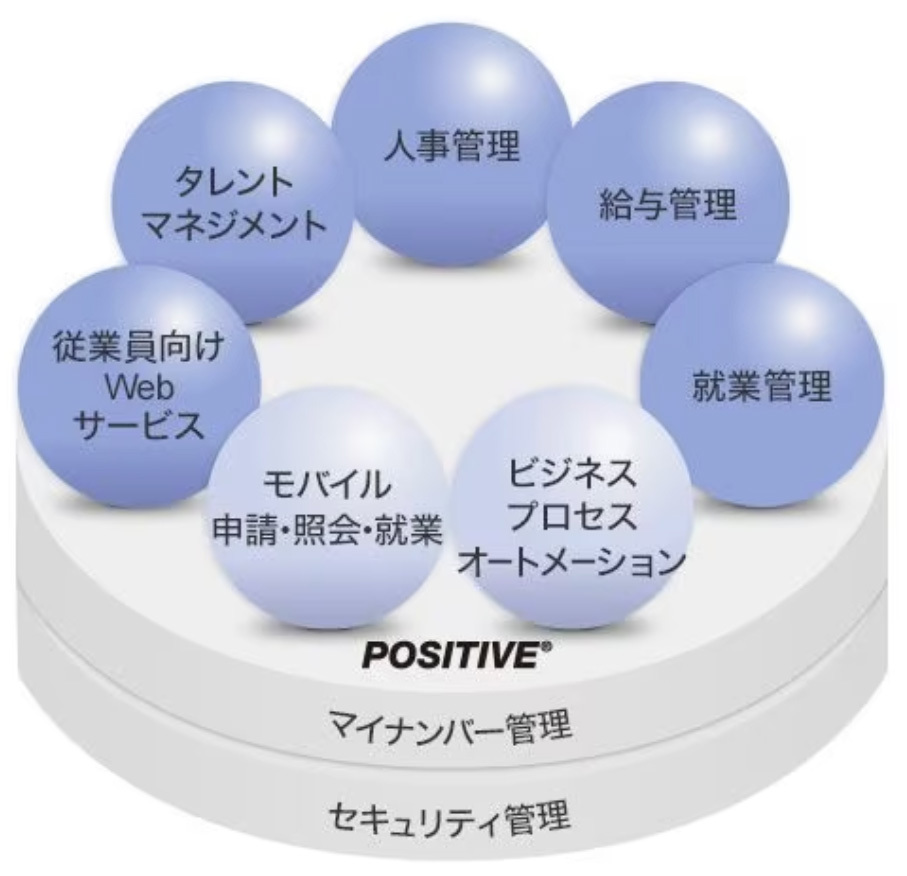
──What challenges do you see for Japanese companies advancing human capital management? Or, even before the term "human capital management" emerged, what challenges existed in the HR domain within the context of strategic HR?
Saito: My impression is that few HR departments are suddenly moving toward human capital management. Rather, the honest reality is that they are being forced into it by external pressures.
When I ask, "What activities are you currently engaged in?", I often hear, "I don't know where to start." That might be the biggest challenge. Generally, the HR domain involves a sequence starting with recruitment, followed by development, considering appropriate transfers and placements, and encouraging longer tenure. While there are various challenges within this framework, people often say they don't know where to begin.
Taking it a step further, we also receive inquiries about what kind of analysis or initiatives can be considered, even when HR-related data is available.
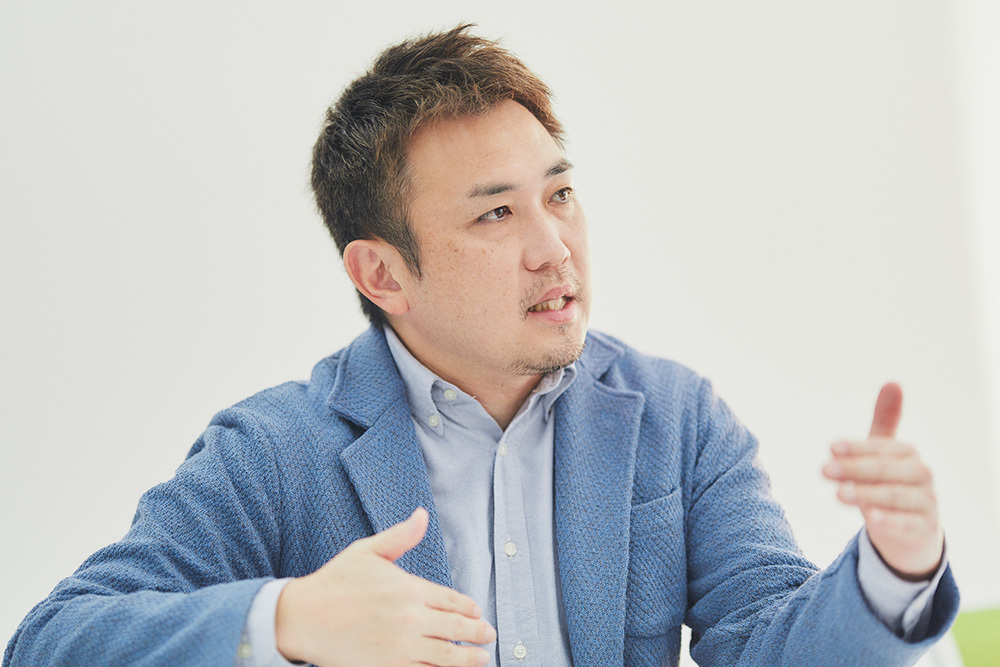
Strategic Consulting Group, Chief Producer, Mr. Masayoshi Saito
Iwai: I agree. We see two main scenarios: first, when top-down directives or legal changes create mandatory tasks that frontline teams must execute, but they don't know the optimal or most efficient approach; and second, when teams want to take initiative, but the sheer volume of required actions leaves them unsure where to start.
In the first case, for example, when companies are required to disclose human capital information, there are mandatory disclosure items and voluntary disclosure items. Ideally, the voluntary items should reflect the company's culture, purpose, and management strategy. However, the impression is that even before getting to that stage, companies struggle to gather the data needed to disclose the mandatory items.
In the latter case, management might say, "We want this kind of talent, so please develop it." But when considering how to develop employees to match the desired profile, they realize the current skill levels of their workforce are completely invisible. To make them visible, they ask employees to take assessments, but they become suspicious, wondering if this truly enables skill visualization.
A solution that can start from any HR challenge cycle
──I believe HUMAnalytics can help solve these challenges. Could you explain the solution's overview?
Saito: As part of HR strategy, we first help clients articulate and prioritize their objectives during the consulting phase. Based on that, we visualize the data. Next, we analyze the visualized data to explore actionable measures for HR challenges. We then support clients through implementation, accompanying them every step of the way. Repeating this cycle contributes to advancing human capital management and enhancing corporate value.
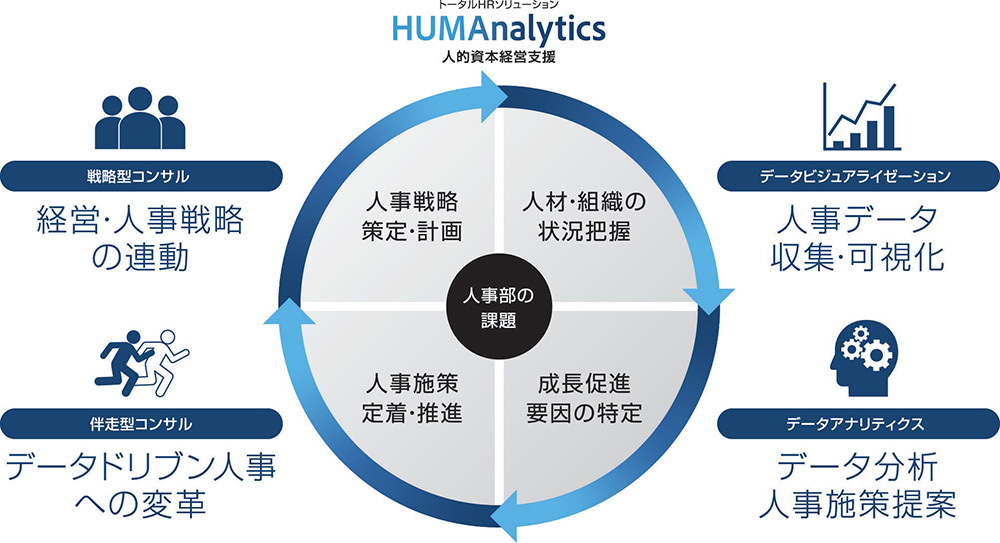
Iwai: One major feature is that you can start from any of the four cycles—"Strategic Consulting," "Data Visualization," "Data Analytics," or "Accompaniment Consulting"—and address HR department challenges end-to-end.
At the same time, recognizing that many clients express uncertainty about what data they possess or what actions to take, we launched a new service called "HR DATA-CHECKUP." This service also utilizes a framework jointly developed by three companies. Clients fill out a questionnaire detailing their current challenges and the types/state of their data, then respond to our interview. Based on this, we provide insights suggesting "For your specific case, these types of analyses are possible," serving as the first step in HR DX.
By comparing these results with the client's challenges, we can have conversations like: "This analysis is critical now, but we lack sufficient data, so let's start by gathering it," or "This isn't high priority yet, but the data is ready, so let's try this approach first."

HCM Service Planning & Development Group Project Manager Asami Iwai
──Having that data significantly solves the problem of not knowing where to start, right? By the way, what kind of data do you collect there?
Saito: We handle about 40 items, including data on ability traits collected through aptitude tests like SPI, transfer history, and experience-related data. We also include data measuring motivation, such as whether someone raised their hand for an internal job posting even if they weren't selected.
We also inquire whether the data was collected last year or annually over the past five years, and who the data pertains to. Finally, we cross-reference the client's HR challenges with the data situation we've gathered to identify the key issues to address.
──It's been about half a year since the service launched. What kinds of user cases are there?
Saito: For instance, we get inquiries about talent development, specifically how to use systems to make it more efficient and effective. The standard advice is to do thorough 1-on-1s or invest time in proper training. However, managers are extremely busy. If they have over 20 subordinates and are told to do 1-on-1s, it's physically impossible. We support them in finding ways to manage this effectively using technology and systems.
With the emergence of generative AI, we're exploring ideas like creating an AI-supervisor concept. Also, in today's environment, managers are often suddenly transferred to departments they have no prior experience with. We're considering mechanisms to support such managers.
Looking closer to home, we're collaborating with three companies to explore how to personalize recommendations for the e-learning services our clients subscribe to. We're examining how to gather effective feedback and how to help individuals tangibly feel their growth based on the training they receive.
First, approach the 2,700 companies already using POSITIVE
──Regarding the HR system POSITIVE mentioned earlier, I understand it has already been implemented by over 2,700 companies. Could you briefly explain what kind of solution it is?
Iwai: The original system was born in 1994 as a core package for HR and payroll management targeting small and medium-sized enterprises. It was then released in 2002 as a core HR system for group integration, marking its 20th anniversary last year.
Beyond HR, payroll, and attendance management, it incorporates talent management and workflow functions. It boasts a strong adoption track record as a foundation for group management and shared services within large corporations. A key feature is its integration of business process automation and AI recommendation functions to align with current industry trends.
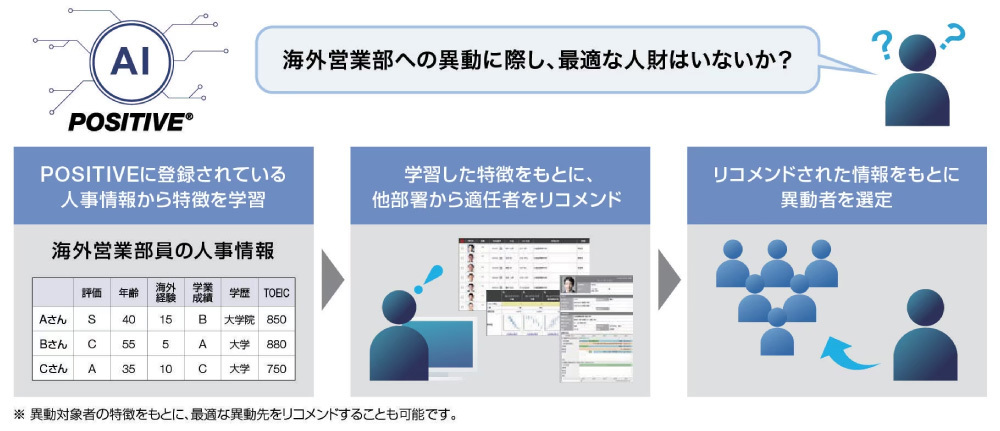
──I understand that by collaborating with three companies covering HR strategy, infrastructure, and analytics, with POSITIVE—which integrates talent management alongside HR, payroll, and attendance management—at its core, you aim to demonstrate the advantages of a total solution. How do you personally view the strengths of the Dentsu Group in solving HR challenges?
Saito: Actually, both Iwai and I transferred to the HCM Business Division from different departments, so we haven't worked with POSITIVE for many years. However, I believe the fact that members with diverse backgrounds are coming together to pursue new business is a significant strength from a diversity perspective.
Even within the same company, different business units have distinct atmospheres and cultures. Everyone brings their own unique expertise, and blending these perspectives to generate new ideas and values is something truly unique to ISID.
──How about the three-company collaboration aspect?
Saito: Having specialists from each field come together as a project team is highly significant. Furthermore, even after the main phase handled by each company concludes, many members continue discussing what activities are needed for the next phase. There's absolutely no sense of finality, and it's incredibly interesting to be part of.
Iwai: The strength of the Dentsu Group lies in our ability to leverage creativity and resonate with clients' hearts. ISID's strength is thoroughly understanding clients' operations and translating them into systems. By combining the strengths of each group company, we believe we can differentiate ourselves from consultants primarily handling upstream strategy formulation and SIers responsible for system implementation.

──Could you share your future plans? Will you first approach companies already using POSITIVE?
Saito: We believe awareness of HUMAnalytics remains low even among our 2,700 client companies, so we must work to raise it.
We've also faced various challenges while advancing projects, and through agile responses, byproducts like HR DATA-CHECKUP emerged. Right now, our priority is to rapidly create "templates" demonstrating what HUMAnalytics can achieve, enabling us to reach more people.
Iwai: I'm actually also in charge of alliances. Beyond areas where POSITIVE is strong, customers have many other HR challenges. We want to broaden the scope of HUMAnalytics solutions, including collaborating with partners who excel in those specific areas to make joint proposals.
──What do you envision beyond HUMAnalytics? If you have any thoughts about companies or society, please share them at the end.
Iwai: I hope we can do more than just provide insights. I want us to support organizational growth by thinking alongside our clients, ultimately aiming to accompany them as they strive for self-sufficiency.
Saito: Our purpose is "Believing in People, Changing the Way Japan Works." We value connections not only internally but with all stakeholders, aiming for corporate growth and a society where every employee thrives. In the coming era, how individuals work—in what form and for what kind of organization—will become increasingly important. We believe HUMAnalytics and POSITIVE can directly and indirectly support this.
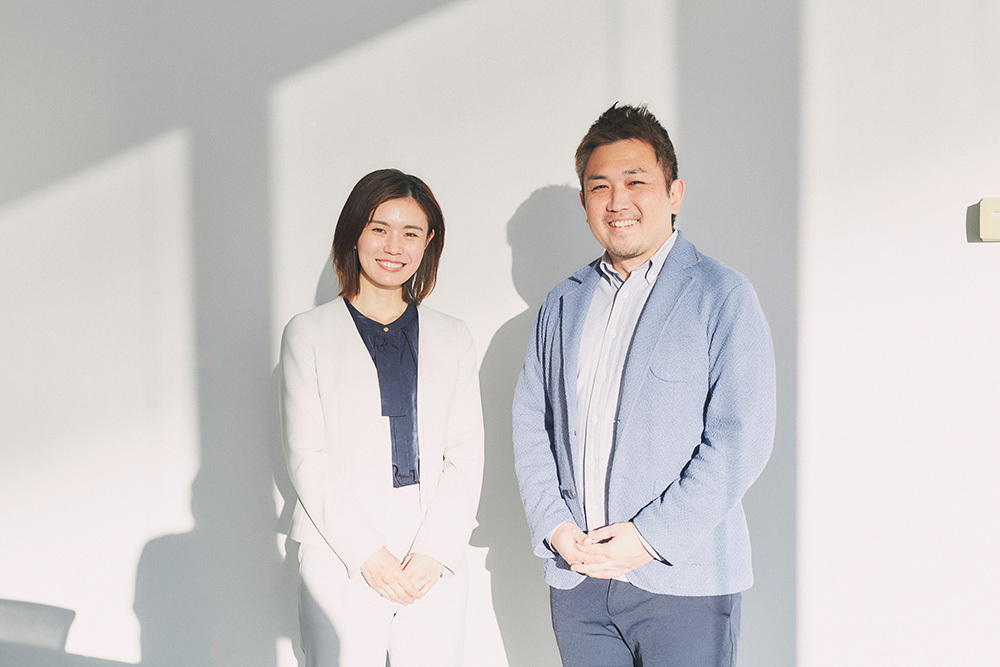
After the Interview
Tomokazu Segi, Editor-in-Chief, Japan Innovation Review
This series, which has interviewed people challenging "transformation" within the Dentsu Group, comes to a temporary conclusion with this installment. What became clear through these interviews was the sight of people seriously tackling areas the Dentsu Group had previously not focused on much—such as supporting sustainability management and B2B marketing—while leveraging their greatest strength: "moving people's hearts," cultivated through their long experience as an advertising company. "The Dentsu Group is genuinely trying to change" – this is the unvarnished impression I hold now, after a year of interviewing many Dentsu Group personnel. To support clients' transformation, the Dentsu Group itself must also change.
The individuals I spoke with this time were two from ISID. Mr. Saito and Mr. Iwai are also challenging themselves to create new value by "changing."
Since its launch in 1994, "POSITIVE" has built a track record in routine HR tasks like payroll and attendance management (the so-called "defensive" HR domain). However, in recent years, the importance of investing in "human capital" has become strongly recognized. This has led to a demand for "offensive" HR that aligns with management strategy and contributes to the sustainable enhancement of corporate value. Perhaps, even in the immediate future, the "POSITIVE" business might not face significant disruption. However, this approach cannot solve the increasingly complex and specialized challenges faced by customers. That is precisely why change is necessary. That was the conviction of the two leaders.
Their approach—breaking free from the constraints of being a system integrator (SIer) and collaborating with group companies to create new value by providing "Total HR Solutions" that integrate "Consulting" and "Data Analytics"—seems to perfectly symbolize the current Dentsu Group: "Transforming ourselves to support our customers' transformation."
In January 2024, ISID will change its name to DENTSU SOKEN INC. Simultaneously, it will integrate two group companies engaged in consulting (ITID and ISID Business Consulting) and transfer the functions of the think tank "DENTSU SOKEN INC." within Dentsu Group, which oversees the group's Japanese operations. This move leverages its existing strengths as an SIer while further strengthening collaboration within the group to support client transformation. It will be exciting to see what value the new structure brings to customers and society.
(JBpress)
Was this article helpful?
Newsletter registration is here
We select and publish important news every day
For inquiries about this article
Author

Masayoshi Saito
DENTSU SOKEN INC.
Since joining DENTSU SOKEN INC., I have primarily worked on numerous projects involving operational, personnel, and organizational restructuring for financial institutions, as well as related system development projects. In recent years, he has participated in multiple consulting projects across all HR domains, regardless of industry. Since May 2023, he has served as the lead responsible for planning and driving initiatives related to the peripheral services of the total HR solution "HUMAnalytics" and the core HR system "POSITIVE," supporting more companies in realizing human capital management.
Articles by this person

Iwai Asami
DENTSU SOKEN INC.
In 2012, joined DENTSU SOKEN INC. (formerly Dentsu International Information Services). After joining, gained experience in system development, maintenance, and operation; RPA implementation support; and DX talent development. In recent years, primarily promoted service planning and alliances in the talent development domain.

